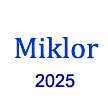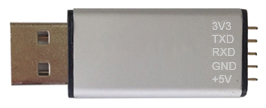
Build your Own Programming Cable
for Baofeng, Kenwood, Wouxun
by John 'Miklor'
K3NXU
Frustrated with that generic programming
cable?
This $2 solution might just be your ticket to sanity. |
 |
Let's See...
You purchased a
radio and programming cable, loaded the software, and
that's as far as you've gotten. You're fighting
with error messages:
- Radio did not respond
- Could not open COM port
- Run Time Error
and Windows (TM) 10 keeps
changing your drivers.
Now you do what many owners do. Put the radio in the
drawer to be worked on later. This is like buying
a rollaway treadmill and putting it in the closet until
the next time you want to exercise. (NOT gonna happen)
But wait, yours has the company name and logo right on the cable.
- It doesn't matter. Keep reading.
There are a few options available, such as an
FTDI
cable. It's truly Plug 'n Play, and costs about $20.
But here's a project that just might solve the issue for
around $2.
All you need is a small flat blade screwdriver, a soldering pencil, and a CP2102
board.
CP2102
The CP2102 is a USB to TTL UART chip. What?
Long story short... It's the same thing that's in your
current cable now, except these work.
CP2102 boards can be found on
eBay for around $2
and also on
Amazon.
Some CP2102 are 5 pin while others are 6 pin. Either
will work, but the 5 pin boards are slightly narrower
and may fit better.
Here's How
Let's start with that original cable.
Take a small screw driver and carefully pry the case open from
the back where the cable enters. Once the back is
opened, pry the case open evenly around the sides.
It should only be snapped together.
Unsolder the 3 wires connected to the board.
GND is Black, TX is Red, RX is White
Solder the 3 wires to the corresponding terminals on the
new board.
Note 1:
(Labels Reversed)
Some boards may have the TxD and RxD
labeled in reverse.
If it doesn't work the first time, reverse the two
wires. No damage has been done.
Note 2:
(Connection Pins)
Most boards have pins on the back requiring small
connectors. You can either remove the pins or solder to
them. Whatever floats your boat. I personally prefer removing the pins and soldering directly to the board.
Retrofit
You will more than likely want to insert the new
board inside the original plastic housing. Using
the board shown above, it
may require a Dremel tool, X-Acto knife, Glue, and some
patience, but it can be done.
I very highly recommend using the 5 pin CP2102 board shown below. It
still has the needed GND, TxD and RxD, but is a bit shorter and fits with no issue. It may
cost a few pennies more, but well worth it.
Some come protected with a piece of clear heat shrink over the board so you can see the cool blinking lights.
This plastic can easily be removed.
For a dollar or so more, you can find the same boards in
a
metal case.


Inside the metal housing.
Look familiar?
|
Driver
When you insert the new board into the USB port, give
Windows a chance to find and load the new driver. This
should take about 30 seconds. When it says Driver Found,
you're done.
If the driver is labeled CH340 instead of CP210x in
Device Manager, that's not a problem. Both chips are
designed to do the same thing.
If Windows is setup to block automatic updates, the SiLabs
drivers can be found at
SiLabs. All drivers seem to
work fine. The CH340 driver can be found at
ChipHead.
But I don't have a
Cable
If you don't have a generic cable, you can use 2.5 and
3.5mm stereo jacks. Here are the pin outs, and what
Jim's (KC9HI) cable looks like.
Note 3: (Works with a variety of cables)
The example above shows a Kenwood style 2 pin plug, but
this will also work with cables using an RJ-45
connector, such as those for a Leixen, etc. The same 3 wires
are used. (GND, TxD and RxD)
Take it one step
further
If you like to see the lights blinking, Bill Frick took
the project one step further by adding plastic lenses to
the case. Here's are
pictorial
of his creation.
What's the Advantage
- First and Foremost, it works. Take the radio out of
the drawer, program it and have some fun.
- Next, it only cost around $2 to save the generic cable
from the trash.
- Very Important - Bragging Rights. Now, when you go to a
club meeting and someone says they can't get their
cable to
work, tell them they can build their own, just as you
did.
I hope you had fun with this project. It's super simple
and very rewarding. I've made several and never had a
failure. Say goodbye to driver issues.
Amazon:
FTDI
Program Cable
My thanks to Jim KC9HI for his input on this
project
and Bill Frick for his Pictorial review. |
|
|
|
|
|